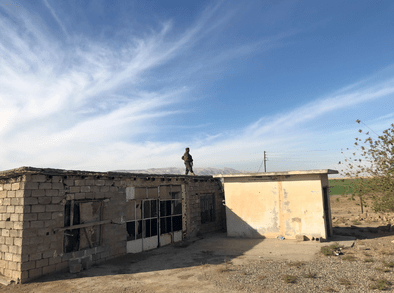
How the Islamic State terrorist group became a franchise
The Islamic State of Iraq and the Levant (ISIL, or ISIS) has changed form several times over the years.
With its origins in the aftermath of the US invasion of Iraq in 2003, ISIL was forged from an alliance between an al-Qaeda offshoot and elements of the defeated Iraqi Baath party.
The group grew exponentially, basing itself in the disaffected Sunni areas of central Iraq, with the aim of setting up an Islamic caliphate.
Increasingly open in its religious proclamations, ISIL’s slick propaganda (PDF) upstaged al-Qaeda’s older grainy videos, winning converts with its high-tech, well-edited advertisements showing training and the bloody aftermath of attacks carried out by the group.
The group grew and grew, telling the world about their “victories” in high-definition videos that served as recruitment tools, spread far and wide through social media.
By 2015, they controlled an area of Iraq and Syria the size of the United Kingdom.
Taxes were now raised, civil service was set up, and the caliphate had its own government and economy; all the trappings of a state.
It took the combined might of several military powers to finally defeat ISIL, with the last ISIL strongpoint in Baghouz in eastern Syria falling in March 2019.
Down but not out by a long shot, ISIL has still been able to launch an increasing number of attacks in Iraq and northern Syria over the last six months.
These culminated in an assault on a prison in January by hundreds of fighters in a brazen attempt to free ISIL captives being held there. The ensuing battle between ISIL and Kurdish-dominated Syrian Democratic Forces (SDF) fighters lasted seven days.
Despite these well-planned attacks, ISIL does not control the territory like it used to and has had to adjust its strategy accordingly.
The draw of a centralised caliphate is no longer there. ISIL’s successes are minor and distributed in hotspots around the world.
No longer do young fighters stream in from the West; recruitment is more gradual and usually from the local population.
Turkey, once the transit point for incoming fighters heading to Iraq and Syria, is much more vigilant and the domestic intelligence agencies have been far better at identifying potential ISIL recruits and stopping them from travelling abroad. Those that have returned and are allowed back are monitored.
Communications have also been curbed. Gone are the slick videos and web magazines as site after site is targeted by intelligence agencies and shut down.
Encrypted communications apps like Telegram are now used more frequently where successes are displayed and communications between potential volunteers and recruiters go relatively undetected.
US military activity has been dialled down and ISIL recruiters no longer have the draw of an international struggle as a propaganda recruitment tool.
Nor does it have the string of brutal victories common in 2014 as the group took swaths of central Iraq and eastern Syria.
However, bloody attacks are still carried out and claimed as propaganda successes, like that by ISIL’s Afghanistan affiliate on Kabul airport on August 26, 2021, which killed at least 175 people.
ISIL’s global propaganda drive has been weakened in some ways by the establishment of what the Taliban has declared to be the Islamic Emirate of Afghanistan.
The Afghan affiliate, the Islamic State in Khorasan Province, ISKP (ISIS-K), has had a history of high-profile, high casualty attacks in the country. Clashes between the two groups accelerated as the Taliban steadily took control of the country, culminating in a lightning offensive in 2021 when the Taliban took the remainder of the country in just a few weeks. With the Taliban now in government and promoting peace, ISIL recruiters had to resort to paying recruits to carry out attacks. Most of these were aimed at Shia and Hazara mosques in an effort to exploit religious divides in the country.
Having now transitioned from fighters to civil servants, the Taliban is in the ironic position of having to conduct campaigns against a network of ISIL fighters who are well versed in hiding themselves in cities.
ISIL in Afghanistan also leverages the Taliban’s uncomfortable transition with disaffected members of the Taliban who are easier to recruit.
The two groups are now locked in an existential battle for survival, the Taliban and indeed Afghanistan as a whole, in desperate need of peace after several decades of war.
The Taliban government has its hands full as famine ravages the country, its funds partially frozen as it struggles to gain international recognition and the aid that would follow.
ISKP has taken advantage of this lull and focused on building up its strength, using funds the group has received from its affiliates in Iraq and northern Syria to grow to double its size in Afghanistan since the United States pulled out.
It now controls limited territory in the east of the country. US intelligence predicts that unless ISIL is seriously compromised by the Taliban, it will be able to conduct attacks outside the country by mid-2023 as cells spread to Pakistan.
Source: Al Jazeera





